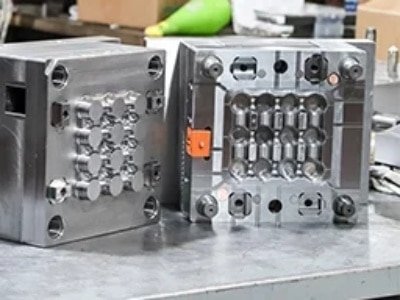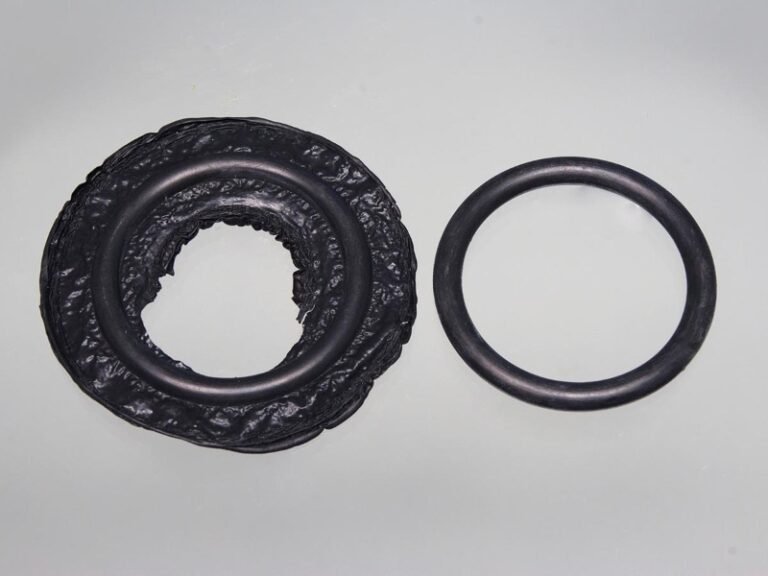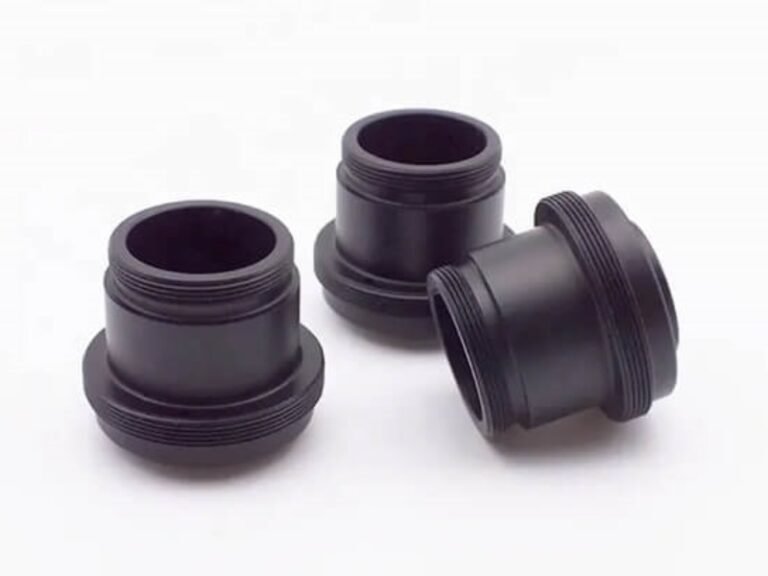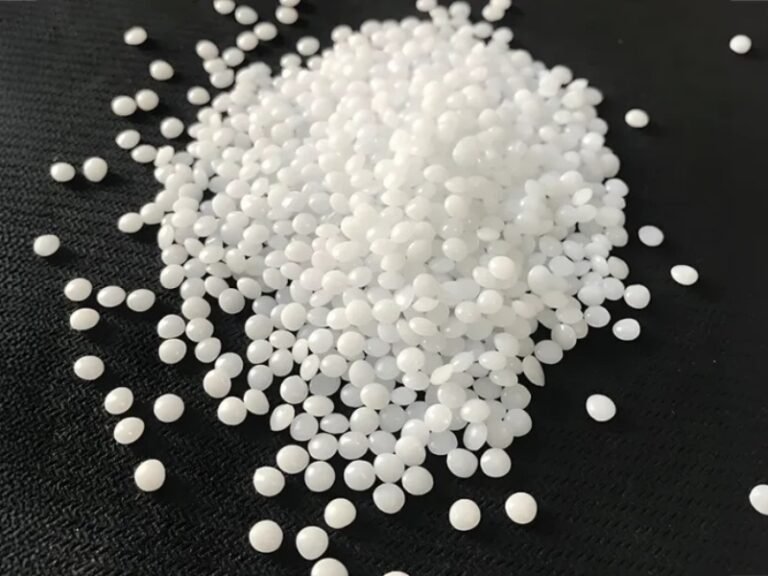Types of injection molds play a crucial role in the injection molding process, directly affecting product quality, production efficiency, and overall manufacturing cost. Understanding plastic injection mould types is essential for designing and producing high-quality plastic parts.
In this comprehensive guide, we will explore the essential role of injection molds in the manufacturing process and shed light on the concept of injection mold grades classification. Understanding the classification of molds based on their attributes will empower you to make informed decisions when selecting the most suitable molds for your manufacturing projects.
What is Injection Mold?
An injection mold, also known as a tool or die, is a custom-made device used in the injection molding process to shape and form molten plastic material into a specific product. It consists of two main halves, the cavity, and the core, which define the final shape of the plastic part.
Learn about: what is injection molding cavity and core?
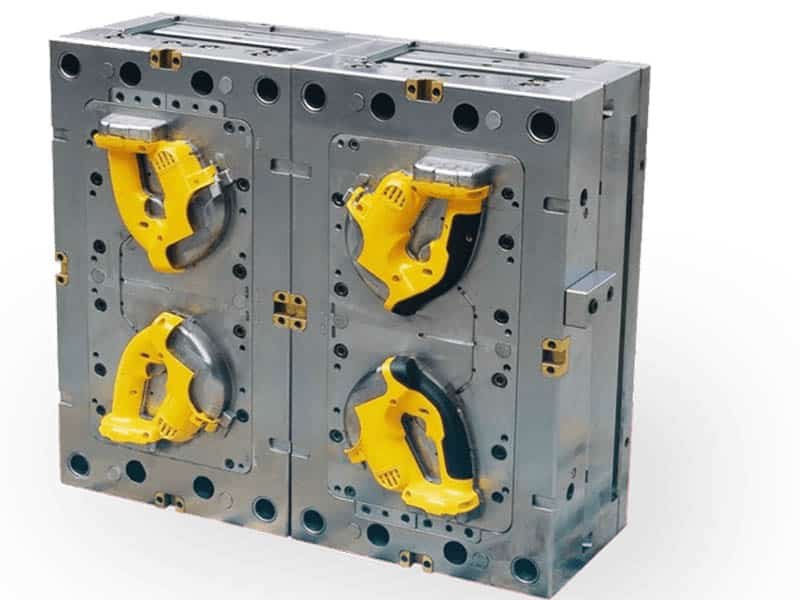
Custom Mold and Design
What Are the Components of Injection Molding Molds?
The injection molding mold itself consists of several components, each with its own specific function within the mold. Learn more about the structure of injection mold.
- Cavity: The cavity is the part of the mold that forms the external shape and features of the final product. It determines the outer surface and design details of the molded part.
- Core: The core is the counterpart of the cavity and creates the internal features of the plastic part. It defines the inner shape and design elements of the molded product.
- Runner System: The runner system is a network of channels that guide the molten plastic from the injection molding machine into the cavity. It consists of a sprue (the main channel from the injection machine) and various runners that distribute the plastic to multiple cavities in multi-cavity molds.
- Gate: The gate is the point where the molten plastic enters the cavity. It controls the flow and is designed to solidify quickly after injection to prevent excessive material waste.
- Ejector Pins: Ejector pins are used to push the finished part out of the mold once it has cooled and solidified. They are an essential part of the ejection system.
- Cooling System: The cooling system includes cooling channels or water passages within the mold that help regulate the temperature during the cooling phase. Proper cooling is essential for achieving high-quality parts and short cycle times.
- Venting System: The venting system allows air or gases to escape from the mold during the injection process. Proper venting prevents air traps and defects in the final product.
- Mold Base: The mold base provides a sturdy foundation for all the components and ensures proper alignment and stability during the molding process.
- Guide Pins and Bushings: Guide pins and bushings help maintain the alignment of the mold halves and ensure accurate part ejection and re-closure of the mold.
- Heating System (optional): In some cases, molds may include a heating system to control the temperature of the mold surfaces, especially for molds used with thermosetting plastics.

Injection Mold Classification
Injection mold grade classification is a system that categorizes injection molds based on their attributes, quality, and performance characteristics. The classification helps manufacturers and designers choose the most suitable mold for their specific production needs. The common classification system is based on the Society of the Plastics Industry (SPI) standards. The SPI mold classification system provides a standardized way to communicate the characteristics and capabilities of injection molds within the industry. Each mold class corresponds to a specific set of standards. Here is a table to compare the mold grade standards.
| Mold Class | Production Volume | Part Complexity | Material Compatibility | Budget |
|---|---|---|---|---|
| Class 101 | Large-scale production | High-precision, complex parts | Wide range of materials | $$$ |
| Class 102 | Limited production runs | High precision, moderate complexity | Wide range of materials | $$ |
| Class 103 | Low-volume production | Moderate precision, simple to moderate complexity | Wide range of materials | $$ |
| Class 104 | Prototyping, limited production | Simple to moderate complexity | Limited material compatibility | $ |
| Class 105 | Prototyping, testing | Simple parts | Limited material compatibility | $ |
Injection Mold Types
There are many types of injection molds used in the industry to meet different production needs and requirements. We can classify the injection molds according to the following situation.
Types of Injection Molds Based on Feeding Systems
- Hot Runner Mold: In a hot runner mold, the hot runner system remains at an elevated temperature even when the mold is open. This reduces material waste, as there is no need to remove and regrind cold runners between cycles. Hot runner molds are suitable for high-volume production and reduce production costs.
- Cold Runner Mold: In a cold runner mold, the runner system cools and solidifies between cycles, resulting in more material waste and increased production costs. However, cold runner molds are often more cost-effective for smaller production runs or when using materials with higher material costs.

Types of Injection Molds Based on the Number of Cavities
- Single Cavity Mold: A single cavity mold creates one part per injection cycle. It is suitable for low-volume production or when the part design is complex, requiring more time and precision for each cycle.
- Multiple Cavity Mold: This type of mold has two or more cavities, allowing for the simultaneous production of multiple parts in each injection cycle. Multiple cavity molds are ideal for high-volume production, maximizing efficiency and reducing cycle times.
- Family Mold: A family mold contains multiple cavities, producing different parts or variations of a part in a single injection cycle. It is commonly used when different parts share similar features or when producing components for an assembly.

Types of Injection Molds Based on Mold Plate
- Two-Plate Mold: A two-plate mold consists of two main halves (plates) that separate to eject the part. It is the simplest and most common type of mold used for single-cavity and multi-cavity molds.
- Three-Plate Mold: A three-plate mold has an additional plate, called a stripper plate, between the cavity and core plates. The stripper plate moves to separate the part from the runner system, which is beneficial for complex part geometries or parts with undercuts.

- Stack Mold: A stack mold utilizes multiple parting planes and can produce twice the number of parts in the same injection cycle. It is ideal for high-volume production and when space is limited.

Between Hard and Soft Injection Mold Tooling
Hard and soft injection mold tooling differ mainly in the materials used and their intended applications.
- Soft tooling, often made from aluminum, is faster and less expensive to produce, making it ideal for prototyping and low-volume runs.
- Hard tooling, typically made from hardened steel, requires more time and cost upfront but offers exceptional durability and precision, making it suitable for high-volume production.
Key Considerations for Choosing Injection Molds
Selecting the right injection mold is a critical decision that directly impacts the success of the injection molding process and the quality of the final product.
1. Part Design Complexity
Evaluate part features, undercuts, and wall thickness, and choose a mold capable of accurately forming complex details. Complex structures may require specialized parting surfaces or slides.
2. Production Volume
Select the mold according to the expected production quantity: multi-cavity or stack molds are suitable for high-volume production, while simple molds are more appropriate for low-volume runs.
3. Material Compatibility
Ensure the mold is compatible with the specific plastic material used. Different materials may require different mold steels or surface treatments, such as nitriding, chrome plating, or polishing.
4. Tolerance and Precision
Choose a mold that meets the part’s required tolerances and precision. High-precision parts may require advanced mold design and manufacturing processes.
5. Mold Lifespan
Evaluate mold durability to match the production cycle. For long-term production, select wear-resistant and durable mold materials, and consider surface reinforcement treatments.
6. Cooling System Efficiency
The cooling system directly affects cycle time and part quality. Optimized cooling channel design improves cooling efficiency and reduces warpage and cycle time.
7. Mold Cost
Consider both upfront mold investment and lifecycle cost to balance initial expense with long-term benefits.
8. Mold Maintenance
Ensure the mold is easy to maintain and spare parts are available. Regular maintenance helps extend mold life and maintain consistent part quality.
9. Lead Time
Assess mold manufacturing and delivery time to meet project schedules.
10. Venting Design
A proper venting system prevents air traps, burn marks, and flow lines, ensuring part surface quality.
11. Hot Runner System
For high-value or high-volume parts, hot runner molds reduce waste and improve efficiency but require additional cost and maintenance.
12. Injection Machine Compatibility
Mold size, clamping force, and injection pressure must match the injection molding machine to ensure smooth operation and extend mold life.
Conclusion with Plastic Injection Mold Types
Injection mold types differ in durability, cost, and required maintenance. Proper selection and care extend service life and improve product quality. Zhongde specializes in designing and manufacturing reliable molds, offering professional solutions for diverse production needs.
